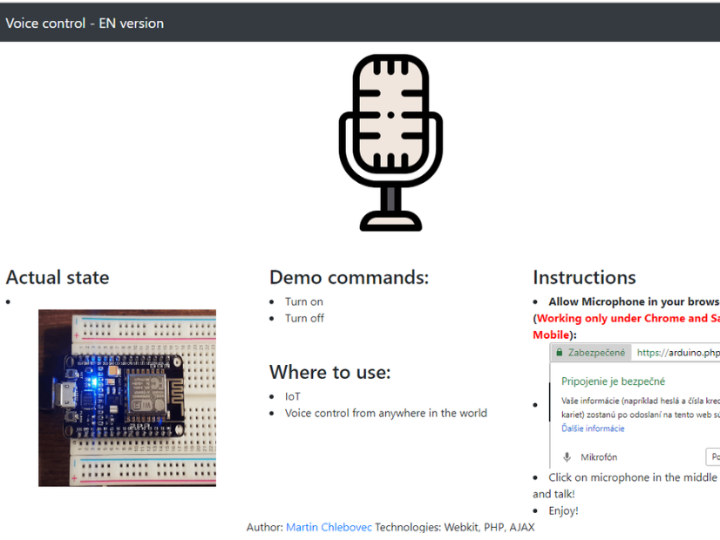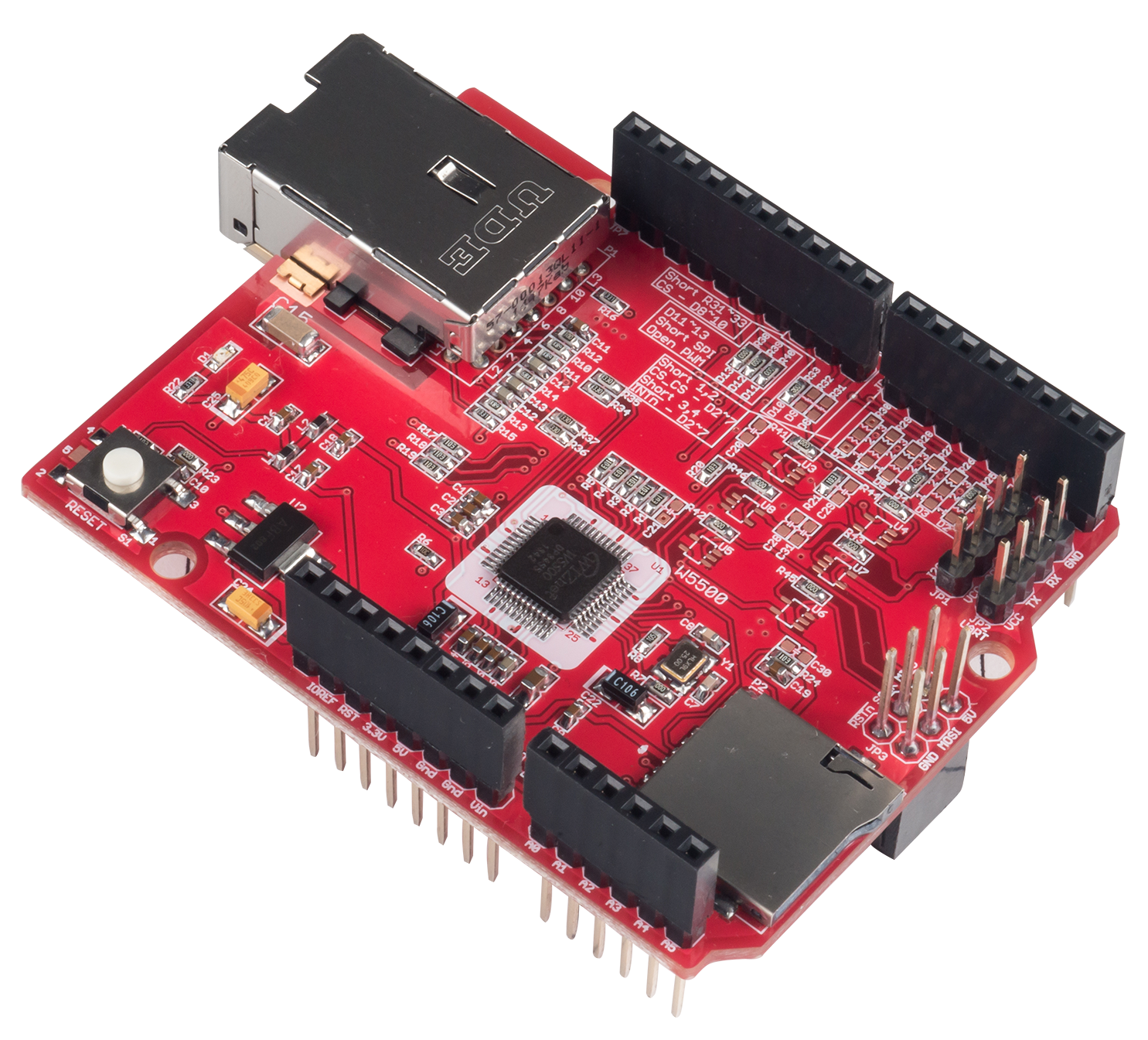Voice Control - Arduino + Ethernet Shield (module) WIZnet
This is a project to build a voice control system using an Arduino and an Ethernet Shield WIZnet module.

Software Apps and online services
Harnessing Voice Control with Arduino and Wiznet Ethernet Shield: A Revolutionary Step in IoT
In the era of rapid technological advancement, the integration of voice control into Internet of Things (IoT) devices represents a significant leap forward. This article delves into the innovative application of voice-controlled operations using an Arduino board paired with a Wiznet Ethernet Shield or module, demonstrating how this technology can be harnessed to control devices directly through your web browser in any language. This approach not only broadens the accessibility of IoT applications but also enhances their functionality and user interaction.
Introduction to Voice-Controlled IoT Devices
Voice control technology has transcended the boundaries of mere convenience, becoming an essential feature of modern smart devices. By leveraging Google's robust servers for real-time voice-to-text recognition, users can interact with their devices in a hands-free manner, making technology more accessible and efficient. This tutorial explores how to set up a voice-controlled system using an Arduino and a Wiznet Ethernet Shield, capable of understanding commands in various languages and dialects, including but not limited to English (en-US, en-GB, en-CA).
System Requirements and Setup
Hardware Requirements
To embark on this journey, you will need the following components:
- An Arduino board (Uno or Mega)
- A Wiznet Ethernet Shield (W5100) or Ethernet module (W5500)
- A webserver capable of running both HTTPS and HTTP protocols
Webserver Configuration
The webserver plays a pivotal role in this setup, acting as the bridge between your voice commands and the Arduino. It must be configured to support:
- HTTPS protocol, essential for using the microphone due to security requirements
- HTTP protocol, for Arduino's connectivity (as it does not support HTTPS directly)
- Apache or Nginx to execute PHP code, enabling the processing of voice commands
Implementation Steps
TRY IT ONLINE: Before diving into the hardware assembly, it's recommended to test the online demo at arduino.php5.sk/PHP_en/. This will give you a firsthand experience of the system's capabilities and ensure your setup meets all requirements.
Arduino Sketch:
The next step involves configuring your Arduino with the provided sketch, which establishes the connection between your board and the webserver, allowing for the transmission of voice commands.
PHP Files: These are essential for translating voice commands into actions on your Arduino. They must be uploaded to your webserver, setting the foundation for voice recognition and processing.
Advantages and Applications
The integration of voice control with Arduino and Wiznet Ethernet Shields opens up a plethora of applications, from home automation systems where lights, thermostats, and security cameras can be controlled with voice commands, to educational tools that make learning more interactive and accessible. The flexibility in language and dialect support further amplifies its utility across different regions and user bases.
Moreover, this setup exemplifies the power of combining simple hardware components with sophisticated cloud-based services to create highly functional and user-friendly IoT solutions. Whether for hobbyists, educators, or professionals, the potential of voice-controlled Arduino projects is vast and largely untapped.
Conclusion
The combination of Arduino, Wiznet Ethernet Shields, and voice control technology offers an accessible, flexible, and innovative approach to IoT development. By following this tutorial, users can create a powerful system capable of understanding and executing voice commands in various languages, significantly enhancing the interaction between humans and machines. As technology continues to evolve, the possibilities for voice-controlled devices are boundless, promising a future where our voices become the primary interface for interacting with the digital world.
-
Voice-Control-Arduino-ESP8266-ESP32
These Arduino, ESP8266, ESP32 working with web interface for voice control.



